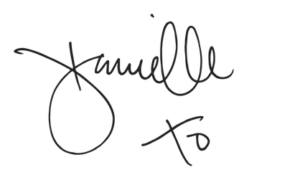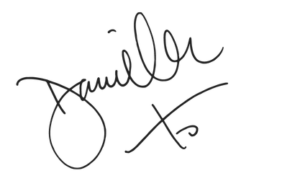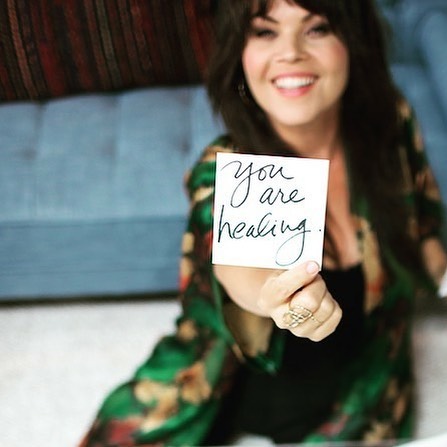{This started as a brief explanation of some near term goals, and turned into an essay for book lovers and bookmakers everywhere. Got books? Read this.}
Powerful. Elusive. Mysterious. Coveted. Nonsensical. Magical. Antiquated. Leading edge. This sums up most opinions of The New York Times Bestseller List. It’s an ever-evolving system of measurement and reward that publishers and authors toil to understand and optimize. Writing an amazing book is a very small part of achieving a “bestseller”.
Like an NHL coach has the Stanley Cup permanently placed in the trophy case of his psyche, I, like innumerable writers, have an ongoing conversation with my agent, my editor, and my ethereal muse about the holy grail otherwise known as The New York Times Bestseller List.
I’ve been working on one side of publishing or another for about fifteen years. I’ve helped authors self publish and get traditional deals. As a freelance publicist I rolled out campaigns for Simon & Schuster, Harper Collins, and numerous independent houses. I worked in the days when you fax-blasted press releases to radio show producers. I’ve had sweet success with my own digital releases. I’ve published my own books with major houses. I even co-created a program on how to get published. And throughout all of it, like a fairy, or a mosquito, a ghost, or a coach, like Gaga dreaming of Grammies, this echoes: The Newwww York Times Bestseller Lissssst.
The Times explains it’s reporting methodology at the bottom of their general list page. You have to read it very slowly, repeatedly, and with your Annie Decoder ring. For book lovers and book makers, shrewd consumers and entrepreneurs alike, I will now attempt to translate some of the realities of the List’s mystique and glory. Stay with me.
Game rules rule
The New York Times collects sales data from various bookstores across the US. As the Times explains: Rankings reflect sales reported by vendors offering a wide range of general interest titles. The sales venues for print books include independent book retailers; national, regional and local chains…; The specific stores and resources that the Times draws from is extremely confidential. As it should be. If we knew which stores were being tracked then, publishers and authors would point people to JUST those stores, and store clerks would start getting free trips to Vegas. It would get messy.
The central, key, strikingly important fact that every List-aiming author should be obsessively aware of: Sales are tracked on a weekly basis, and thus, the List is refreshed weekly. This means that sales concentrated with in a week time period are more likely to get you on the List. Every week is a new race to win.
For the sake of getting on the List, it’s better to sell, say, 1000 copies all in one week, then it is to sell 1500 copies over a month. This constraint is one of the primary reasons that we have publication or “pub dates”, also known as “on sale dates” for books. It gives all the players involved (warehouses, retailers, magazine editors) a pull-the-trigger time for stocking shelves, shipping to customers, and running articles. Like all birthdays, pub date is time to throw a big party (fingers crossed that lot’s of people show up.)
“So to clarify: it’s about selling as many books as possible between pre-orders and the end of your first launch week.”
Pub week is your gold medal race. Everything before that is qualifying you to get to the starting line.
Getting a head start
In most cases, a book is put into the online retail system months before the actual on sale date. This is great news for everyone. It gives authors a head start by allowing them to collect orders in advance of the on sale date. THE FIRE STARTER SESSIONS’ on sale date is April 17, 2012, and it was available for pre-order on Amazon in October 2011. I didn’t make this publicly known until February 2012. When I did sound the bell, “It’s available for pre-order! Step right up!” THE FIRE STARTER SESSIONS hit #1 in three Amazon categories. (Woo!) Tim Ferriss proved that fans are fans and the world is hungry for more when THE FOUR HOUR CHEF – which isn’t on-sale until September 25 of this year, topped the Amazon bestseller list a staggering nine months before pub date.
The best way to think about the pre-order to pub week lead up, is as a bucket that starts filling up with sales as soon as people can reserve their copy (with their credit card, of course.) That sales bucket will be emptied a week after your on sale date. And then you start again with a fresh count of the new week’s sales. You really want that bucket full by the end of that pub week because all of those books count toward the Bestseller List. Hopefully. Maybe. (This is where every author starts wringing their hands and feeling like they should stick to reading poetry in pubs.)
A potential snag: if your book physically ships out of the book seller’s warehouse weeks before the pub date, it goes from “pre-order” status to “sold” — and thus, it does not get counted toward the List (because the List just counts sales by the current week.) This is why the pub date is sacrosanct. Except…screw-ups can happen in the supply chain and books can get mailed out before the on sale date. Ouch. I have author friends who were in this exact situation. They generated a lot of pre-orders, the books arrived early from the printer to the warehouse, and the book orders were sent out before the official release date. Those sales didn’t get factored into the publication week numbers for the List. It’s gotta feel like having a ballot box go up in flames.
How many books do you need to sell to get on the List in any given week? It’s hard to say because it depends what other books are released at the same times as yours and how well they sell. As a nonfiction author, you really don’t want to come out the same week as a President’s memoir, or if you’re releasing a children’s book, you want to get as far away from a Harry Potter pub date as possible. It’s all the other runners in the race who set the times to beat.
Equal opportunity for e-books? Not quite… yet.
Here’s how The Times explains their current policy for tracking e-books; E-book sales are tracked for fiction and general nonfiction titles. E-book sales for advice, how-to books, children’s books and graphic books will be tracked at a future date.
“…tracked at a future date….” That means that the publishing industry is changing so quickly that we’re all tripping over ourselves to get in front of it. It’s a good thing. Players are committing to change — and some of them are leading it. But the e-book/bestseller science has another dimension of complexity to it (hang in there), because not all categories of books get counted equally. All the general nonfiction, fiction, and “advice/miscellaneous” (my book’s category) only have their PRINT book sales counted.
Let me explain how that reporting affects my reality and anyone else who is writing “advice or miscellaneous” content. (Show of hands?) As I just noted, THE FIRE STARTER SESSIONS falls into the ADVICE & MISCELLANEOUS category. My book is most certainly full-tilt advice (bookstores will be instructed to shelve it as Self-Help/Success/Motivation). It’s the “miscellaneous” part that’s a downer. I could be corralled with knitting guides. I’m all for the success of crafters. But tracking apple and orange sales alongside each other isn’t good for apple or orange farmers, or consumers of apples and oranges. We need new categories. But I’m not here to solve that, I digress. Let’s get back to the fair treatment of e-books, sweet e-books.
The current e-book tracking practice is particularly heartbreaking for creators of books whose audience is more digital-friendly and likely to load up their Kindles or Nooks. So no matter how many e-books I sell, they won’t count toward my NYT category ranking. And if you’re launching a highly anticipated cooking/lifestyle or wellness or religious or motivational business tome; to a very digital-friendly audience, then, nope, your e-book sales won’t count either. Trag.ick.
It’s because e-books don’t count toward the ADVICE & MISCELLANEOUS pool that many of us authors in the first few weeks of launching our print books, scarcely whisper about having a digital edition of our book available. I’ll restrain myself from pointing buyers to the e-reader version until I’ve made it out of the gate for the print book launch. This is slightly painful because aside from loving the eco-lightness of e-books, I want my readers to be fully aware of all of their multimedia options.
E-books are people too. The Times puts it this way: The universe of e-book publishers and vendors is rapidly emerging, and until the industry is settled sales of e-books will not be weighted. It’s only a matter of time before the Times swings digital sales into the hot lists. But if they could do it by, say… April 17 of this year, I’d be much obliged.
“So to clarify: it’s about selling as many PRINT books as possible between pre-orders and the end of your first launch week.”
Steroid usage
You might think that an author trying to land on the List in the first few weeks of launch would be overjoyed to sell a few hundreds books at a time in bulk orders. Like, when an event host, or HR director, or eccentric friend wants to order a few cases of books. But bulk orders are weighted differently on the List. The Times uses the lil’ dagger symbol (†) on the actual List that “indicates that some retailers report receiving bulk orders.”
So no, authors can’t game the List by buying ten thousand copies of their own book. Taking steroids is a no no.
“So to clarify: if you’re a “SELF-HELP / MOTIVATIONAL / SUCCESS” writer, then it’s about selling as many INDIVIDUAL print books as possible between pre-orders and the end of your first launch week.”
You might think that if the whole state of California bought your book when it first came out, that that would be grand (and yep, it would be!) But understandably, The NYTimes needs to see that the book is selling across the country — that it has national appeal, and that you didn’t get your Governor uncle to go buy a bunch of your books in bulk.
“So to clarify: if you’re “Self-Help/motivational/Success” writer, then it’s about selling as many individual print books ACROSS THE COUNTRY as possible between pre-orders and the end of your first launch week.”
And you thought you just had to write a good book and get on The Today Show or a blog that will give you the Tim Ferriss Effect?
What if you don’t get the gold?
If you don’t hit the list on your launch week, after you dry your eyes or the hangover lifts, you pray that you sell enough books in the coming weeks (one week at a time) to land you on the List. Rapidly, the window of opportunity begins to shrink. Your media ops get saturated or exhausted, and you yourself will be getting pretty wiped out.
At this point, an author will: 1) Keep trying to land major media placement (an article in O Magazine might work wonders.) 2) Let go of the goal of getting on the List and keep up steady marketing efforts. Onward. Just like movies that don’t win the Oscar and go on to become classics, an infinite number of books that don’t hit the List will sell mega copies, far outselling those that made it on the List for a week or two. It’s worth mentioning here that getting on the List doesn’t guarantee you anything — it just increases your chances of more desirable things happening for you and your book. 3) Try to hit the List with your paperback or updated edition — which you will release anywhere between nine months (very early) to twenty fours months (quite late) after your hardcover edition comes out. With the release of a new book, you have a fine excuse to kick off a fresh campaign and get yourself back in the race.
Is it worth getting in the race? Hell, yes.
Some of my visionary but stoic friends have asked me, “Why bother with the List? Do you need the ego stroke? You can make more money selling your own stuff online.” True that. I could bring in good cake by continuing to digital self-pub on my own site. But that’s not the only medium for me. Firstly, I’m a sensualist. I love how printed books look, feel, smell. I believe that other people feel the same way. And also, I’m aware that not everyone has the privilege of owning an e-reader.
Print books will continue to thin out in quantity as more of us get access to devices. But I believe there will be some types of books whose pages we will still want to touch, and whose margins we want to take notes in. Books you want to hand to people as gifts. Soulful companions that warrant collectors’ status, in part because they carry timeless wisdom. Those are the kinds of books that I want to write.
As for ego… Does my ego need the stroke of having THE FIRE STARTER SESSIONS be a New York Times Bestseller? Um, yes. But I gave my all to this project, and keeping that in mind cools down my ego-centric wants n’ needs. At the end of the day, I’m proud of what I made, with or without the merit badge. And as any artist who’s also endowed with the entrepreneurial spirit can relate: First comes art for art’s sake, and then you pimp it like there’s no tomorrow.
Does it make good business sense to pour a ton of resources and time into trying to hit a moving target that has no guarantees of tangible positive consequences if you nail it? Yep, yep it does. If you hit the List, it could create a domino effect of more people hearing your message, book sales, requests from foreign publishers (FIRE en Francais?! Ooo la la!), speaking gigs, a hopefully a juicer deal for your next book(s).
I’m not even out of the gate yet and the experience of reaching for the List has been infinitely worth it. I’m collaborating with people I very much respect. I’m having conversations with media makers that will filter out and make a difference in some people’s lives. I’m helping some friends make progress along the way. I’m laying down more innovative tracks. And I’m getting off on the mystique, the moving target, and the creative tension that makes up this game.
The creative process of having an idea, putting that idea into a medium — a bound book, a film, a seminar, an app — and giving that to as many people as possible, is as much a sport as it is an art. If you’re in the Olympics, you’re not running for bronze. And the guy who comes in fourth doesn’t get on the cereal box. You go for the gold because it’s the GOLD. You run because you were born to. You salut whoever is keeping score. You race because you can.
With Love,















Recent Comments